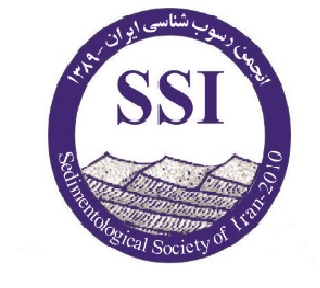Reconstruction of The sedimentary environment of siliciclastic – carbonate sediments of Amiran Formation (Upper Cretaceous – Paleocene) in SW Lorestan
Subject Areas :
Keywords: Amiran Formation Submarine fan carbonate platform Zagros basin.,
Abstract :
Amiran Formation (Upper Cretaceous-Paleocene) has an excellent exposure in the Lurestan Province in the Zagros basin. In order to interpret depositional environment of this interval, two stratigraphic sections (type and Pirshamsedin section) were measured and sampled. The thicknesses are 890 and 920 in the two sections, respectively. The lower boundeary of Amiran Formation at the type section is sharp with Gurpi Formation and Upper boundeary is gradual with Talezang Formation.This formation is composed of Lithofacies conglomerate, sandstone, mud rocks, and carbonates. Amiran Formation in the study area is composed of two units, Carbonate (in the basal and upper parts) and Siliciclastic facies (in the middle and upper parts). Based on petrographic studies, 8 Silisiclastic petrofacies and 18 carbonate microfacies have been identified. The carbonate microfacies are deposited in 3 facies belts including open marine, barrier and Lagoon in a carbonate ramp. Most of the identified Rudists in this formation are elevator, horizontal and individual types constratal fabric and are usually present in the lagoonal deposits. Based on Dictyoptychus genera, especially Luftusia general, Maastrichtian age is suggested for this unit. Siliciclastic rocks in this formation include of shale, siltstone, calclithite, lithic wacke, chert arenite and ortho-micro conglomerate petrofacies. Based on The petrography and present of The sedimentary structures such as gradded-beds, Bouma sequence etc. they are deposited by turbidity The currents in the slope and sub marine fans.
